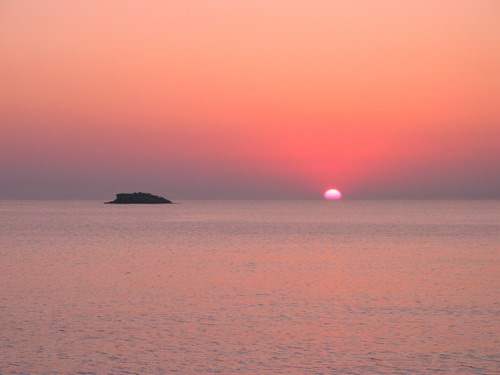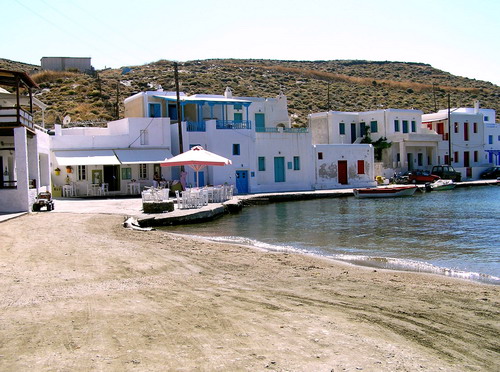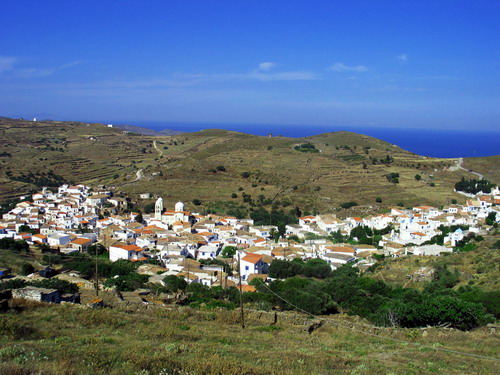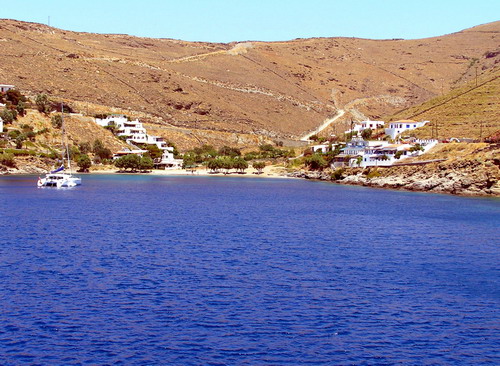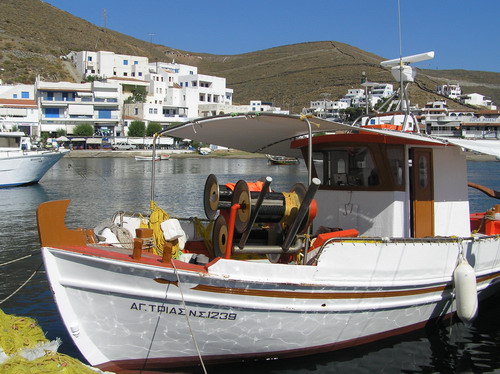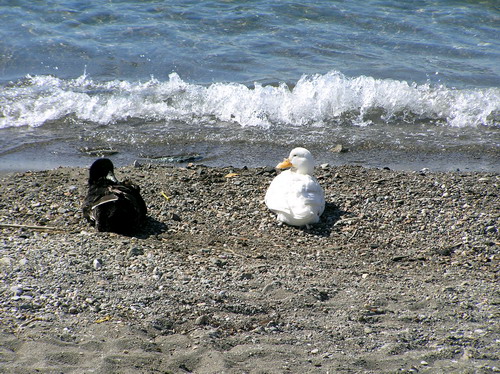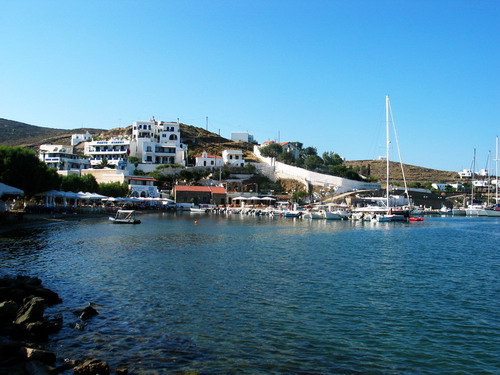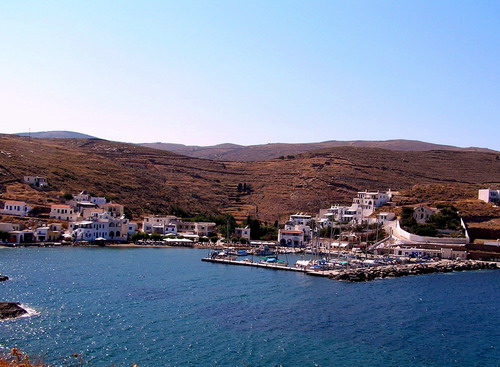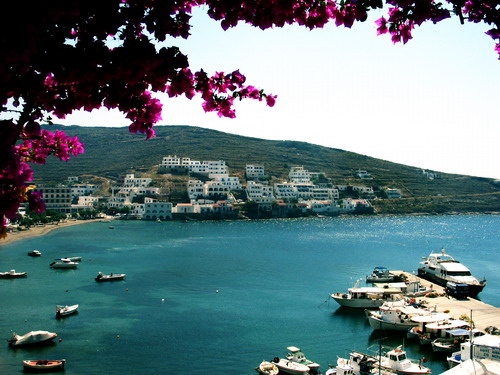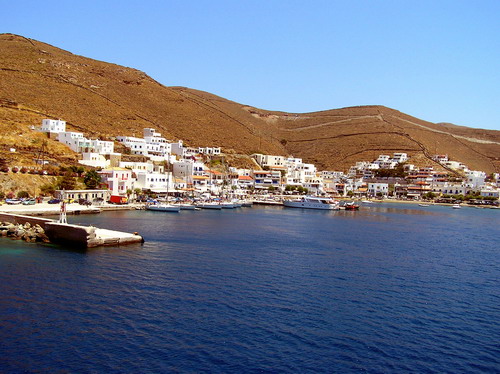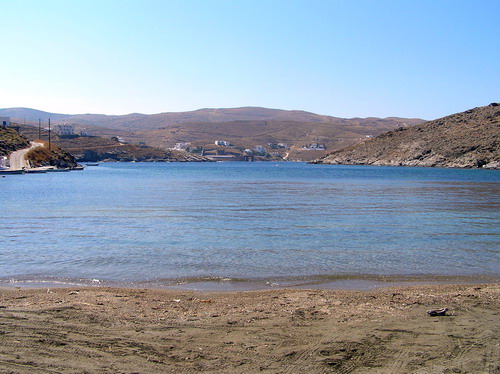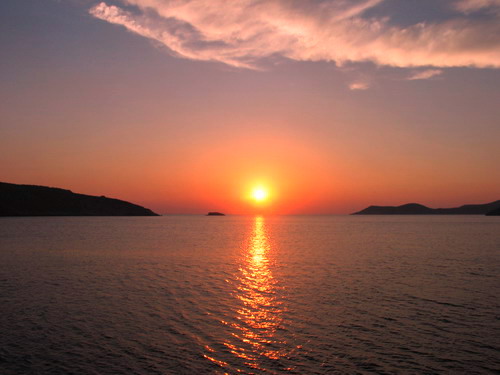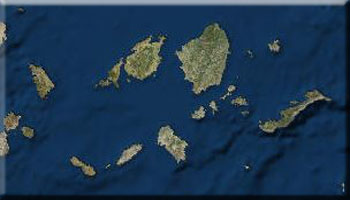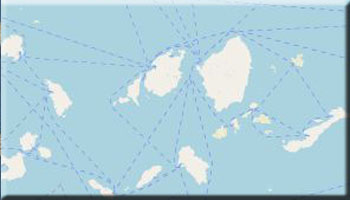Kithnos, or Thermia as it is also known, is the first island on western Cyclades sea routes and an ideal destination for short breaks as well as long holidays. Countless beaches, the typically Cycladic landscape dotted with dry stone walls (xerolithies), and locals' warm hospitality extend a welcoming embrace.
The island is about one hour from Lavrio on high-speed boats and 90 minutes by ferry; from Piraeus is a three-hour journey by ferry.
Kithnos is named after Kithno, chief of the Dryopes and the island's first settler. By another account, the island's name derives from the root "kith", from which the verb keftho (I hide) also derives and suggests its name means "hiding place".
Mesolithic artifacts unearthed in recent excavations in the Maroulas offer evidence that the island may be the oldest settlement in the Cyclades.
Herodotus mentions that in the 13th century B.C., the Dryopes arrived on the island where they built Cyclopean walls and impressive temples. The island was subsequently settled by Ionians.
Kithnos contributed a trireme (ancient galley with three banks of oars) to the Greek fleet in the Persian wars and joined the Athenian League (or Confederacy). Later, the island came under the Roman empire and subsequently the Byzantine empire, where it was part of the Aegean theme.
Under Venetian rule, Kithnos was taken by Marco Sanudo and named Thermia because of its warm waters.
Pillaged by the pirate Barbarossa in 1537, the island remained under Venetian rule before passing into Russian hands after the Russo-Turkish war.
In 1827, the island reverts to its ancient name, Kithnos, and joins the Greek revolt for independence from the Ottoman empire. During the reign of King Othon (Otto), dissenters were exiled to the island. In 1862, rebels from Syros clashed with the army at Ayia Irini Bay in a bid to free detainees on Syros. The uprising was put down and three rebels-Leotsakos, Moraitinis, and Skravelis-killed in the fighting.
Today, the local economy revolves around tourism along with farming and other occupations. Kithnos offers visitors the perfect combination of Cycladic beauty, pristine waters, and local produce-meat, dairy, fruit, vegetables, and fresh fish.
Maroulas
Excavations at Maroulas uncovered a Mesolithic (9000-8000 B.C.) settlement. Evidence suggests it may have been a resupply station or staging base. Archaeologists unearthed circular dwellings and graves, while finds included a human skeleton and a number of stone tools made from firestone, quartz, and obsidian. The site is the only open-air Mesolithic settlement known in Greece.
Kastro Orias
The Oria kastro (fortifications) is located on the island's northern area, between Sklavo and Yialoudi hills just before reaching of Cape Kefalos.
Wind and Solar Park
The wind-power and solar-energy park is located near the heliport, just outside Hora. Wind-powered generators and solar heat collectors at the park are used to power the island.
Byzantine Museum
A small Byzantine collection is housed in Ai Georgis church at Dryopida and is open daily from 10 a.m. to 2 p.m. and from 7 p.m. to 9 p.m.
Ai Minas Church
The church dominates Dryopida and is worth visiting for its exquisite wood-carved iconostasis and epitaphios (funerary bier used in Holy Week services) and a bishop's throne that offers a fine example of folk art.
Ayios Savvas Church
The church is located in Hora. A carving over the threshold establishes the year of its founding as 1613.
Folklore Museum
Located in Dryopida, the museum features a small but interesting collection of antique tools and other implements that offer a flavor of day to day life in earlier centuries alongside a collection of traditional costumes.
Panayia Kanala Monastery
Dedicated to Panayia Kanala (Our Lady of Kanala), the island's patron, the monastery is built into the rocks near the coastal settlement at Kanala.
Panayia tou Nikous Monastery
Located about 800 meters from Hora, the monastic community likely takes its name from the Byzantine-era Panayia tis Nikopoiou, that is, Our Lady Who Brings Victory (nike).
Katafyki Cave
One of the Greece's largest caves, Katafyki features stalactite and stalagmite formations. It's located at Dryopida.
Thermal Baths
The Kithnos Spa was built at Loutra in 1857. It's open daily from June through October and has two medicinal springs where visitors can take treatment. The baths of King Othon (Otto) and Queen Amalia, the first monarchs of the Modern Greek State, are exhibited here.
Kithnos has countless coves, bays, and beaches with pristine waters and natural shade:
Ayia Irini: Small beach opposite Loutra
Ayios Dimitrios: Large, pretty sand beach on the island's southernmost point; forms part of the waterfront of Ayios Dimitrios settlement.
Ayios Stefanos: Sheltered beach on the island's eastern coast. Sand, pebble, and natural shade from tamarisks growing along the shoreline.
Ayios Sostis: Gorgeous beach on the island's northernmost tip, with fine pebbles and sand named after the nearby church of Ayios Sostis.
Apokrousi: One of the island's longest beaches with sand and natural shade.
Gaidouromantra: Large, sandy beach with clear water.
Episkopi: Pretty sheltered cover with sand and tamarisks growing along the shore.
Zogaki: Southernmost of the trio of beaches-Naoussa, Kouri, and Zogaki-linked by stepped footpaths.
Kalo Livadi: Located on the island's southeastern coast, it is marked by the church of Panayia Kalolivadiotissa perced on a rocky outcrop.
Kolona: Impressive beach divided by a low sandbank into two sand beaches.
Kavouroheri: Small beach located between Potamia and Maroula.
Kouri: Picturesque beach between Naoussa and Zogaki coves.
Lefkes: Beach in front of the Lefkes settlement; sand, pebbles, and natural shade.
Liotrivi: Small beach off the road to Kalo Livadi.
Loutra: Pretty beach opening off the village of Loutra. Swim at selected spots to catch currents from the spa.
Martinakia: Small sand beach just past Merihas on the road towards Loutra.
Mavrianos: Quiet beach on the eastern coast.
Megali Ammos Kanalas: Large, sand beach on the second bay beneath the church of Panayia Kanala; swimming on the left-hand bay is at a spot called Antonides.
Merihas: Beach next to Merihas village, with pristine waters and fine sand.
Naoussa: Pretty beach on the eastern coast with a view of a church perched atop a rock hill.
Petroussa: Small beach on the island's southernmost tip accessible via Ayios Dimitrios.
Potamia: Sheltered and shady beach along the route to Ayios Sostis.
Simousi: Quiet beach on the island's southeastern coast.
Stifo: Pretty, quiet beach along the route to Ayios Dimitrios.
Schoinari: Sandy, shaded beach next to Loutra.
Trivlaka: Small bay on the island's western coast.
Fykiada: Beach wth golden sand framed by a gorgeous setting.
Flambouria: Large sand and pebble beach marked by the church of Panayia Flambouriani.
The paniyiri is a combination religious and folk feast held to observance saint's days and other important dates, featuring traditional foods and music.
- April 23: Ayios Georgios
- June: Ayia Triada
- June 30: Ayii Apostoloi
- July 20: Profitis Ilias
- July 26: Ayia Paraskevi
- August 6: Sotiros
- August 15: Panayias Kanala, Panayia tou Nikous, Panayias Stratolatissa
- August 23: Panayia tou Kastrou, Panayias Flambouriani
- September 8: Panayias Kanala
| MUNICIPALITY OF KITHNOS | 2281031277 |
| CITIZENS SERVICE BUREAU (KEP) | 2281031640 |
| MEDICAL CENTRE | 2281032234 |
| PORT STATION | 2281032290 |
| POLICE STATION | 2281031201 |
| INFORMATION CENTRE | 2281032250 |
| BUS STATION | 2281032250 |
| TAXI STATION | 6944276656 |









